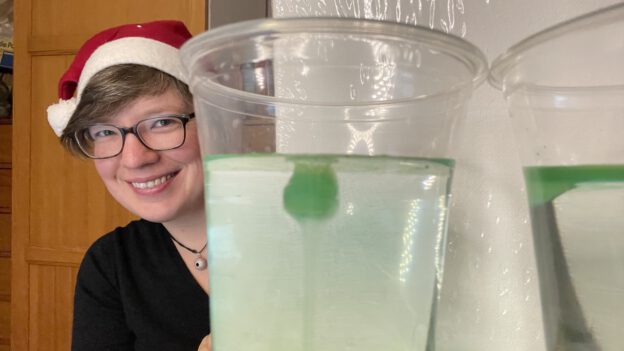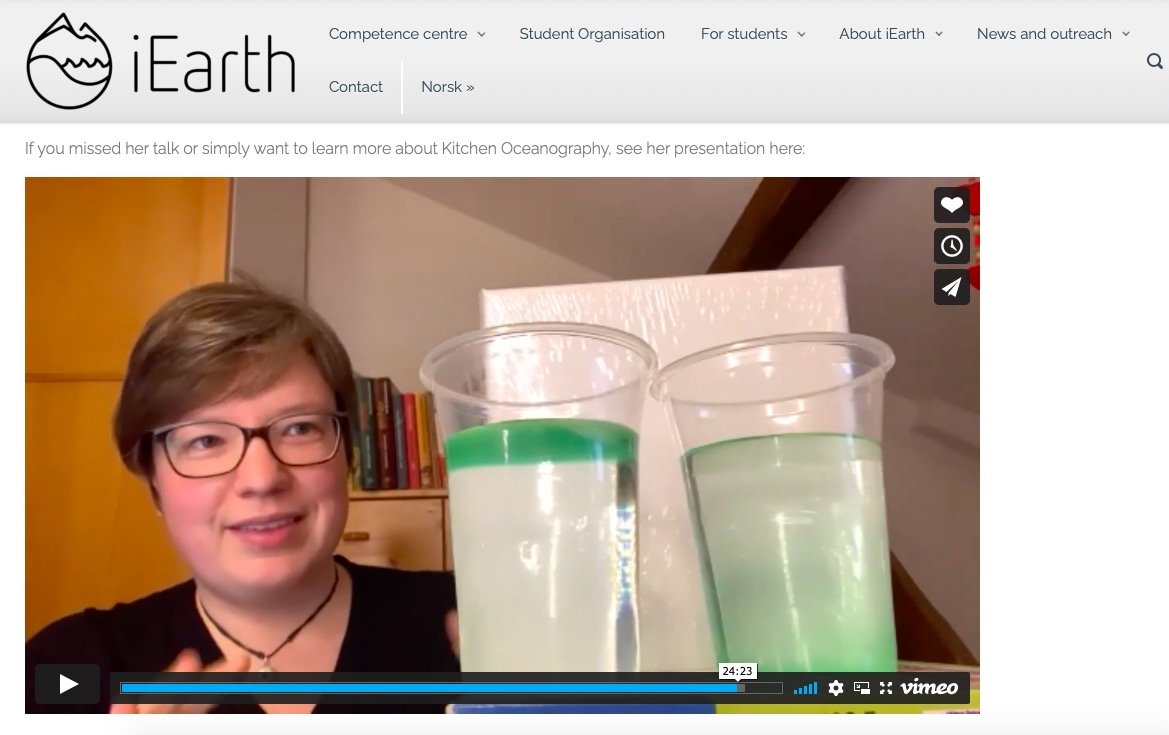iEarth is currently establishing the new-to-me format of “teaching conversations”, where two or more people meet to discuss specific aspects of one person’s teaching in a “critical friend” setting. Obviously I volunteered to be grilled, and despite me trying to suggest other topics, too (like the active lunch break and the “nerd topic” intro in a workshop), we ended up talking about … #WaveWatching. Not that I’m complaining ;-)
After the conversation, I wrote up the main points as a one-pager, which I am sharing below. Thank you, Kjersti and Torgny, for an inspiring conversation!
—
I use #WaveWatching in introductory courses in oceanography and in science outreach both on social media and in in-person guided tours. #WaveWatching is the practice of looking at water and trying to make sense of why its surface came to look the way it does: What caused the waves (e.g. wind, ships, animals)? How did the coastline influence the waves (e.g. shelter it from wind in some places, or block entrance into a basin from certain directions, or cause reflection)? What processes must be involved that we cannot directly observe (e.g. interactions with a very shallow area or a current)? Kjersti Daae (pers. comm.) suggests an analogy to explain #WaveWatching: Many people enjoy a stir-fry for its taste, like we enjoy looking at water, glittering in the sun, without questioning what makes it special. But once we start focusing on noticing different ingredients and the ways they are prepared, it is a small change in perspective that changes our perception substantially, and leads to a new appreciation and deeper understanding of all future stir-fries (and possibly other dishes) we will encounter.
I teach #WaveWatching using a cognitive apprenticeship leaning (Collins et al., 1988) approach*: By drawing on photos of selected wave fields (in the field using a drawing app on a tablet), I model my own sensemaking (Odden & Russ, 2019). I coach students to engage in the process, and slowly fade myself out. Students then engage in #WaveWatching practice anywhere they find water – in the sink, a puddle in the street, a lake, the ocean. Since waves are universally accessible, this works perfectly as hyper-local “excursions” in virtual teaching: Students work “in the field” right outside their homes.
Waves are not an integral part of the general curriculum in physical oceanography. While some wave processes are relevant for specific research questions, for typical large-scale oceanography they are not. And the concepts used in #WaveWatching are not even new to students, they are just an application of high-school optics to a new context.
Nevertheless, #WaveWatching helps work towards several goals that are important to me:
- Using “authentic data” acts as motivation to engage with theory because the connection with the real world makes it feel more interesting and engaging (Kjelvik & Schultheis, 2019).
- Engaging in sensemaking and gaining experience on what can (and cannot!) be concluded from an observation are highly relevant skills and this is an opportunity for practice.
- Building an identity as oceanographer – seeing the world through a new lens, joining a community of practice (Wenger, 2011), but also being able to demonstrate newfound expertise and identity to friends and family outside of that new community by talking about this new lens – are otherwise rare in socially distant times.
After being exposed to #WaveWatching, people tell me that they can’t look at water in the same way they did before. They are now seeing pattern they never noticed, and they try to explain them or ask themselves what I would see. They often send me photos of their observation years after our last interaction, and ask if I agree with their interpretations. #WaveWatching might thus be a threshold concept, “a portal, opening up a new and previously inaccessible way of thinking about something” and where “the change of perspective […] is unlikely to be forgotten” (Meyer & Land, 2003).
—
Literature:
- Collins, A., Brown, J. S., & Newman, S. E. (1988). Cognitive apprenticeship: Teaching the craft of reading, writing and mathematics. Thinking: The Journal of Philosophy for Children, 8(1), 2-10.
- Kjelvik, M. K., & Schultheis, E. H. (2019). Getting messy with authentic data: Exploring the potential of using data from scientific research to support student data literacy. CBE—Life Sciences Education, 18(2), es2.
- Meyer, J. H. F., and Land, R. (2003) “Threshold Concepts and Troublesome Knowledge: Linkages to Ways of Thinking and Practising” in Improving Student Learning: Ten Years On. C. Rust (Ed), OCSLD, Oxford.
- Odden, T. O. B., & Russ, R. S. (2019). Defining sensemaking: Bringing clarity to a fragmented theoretical construct. Science Education, 103(1), 187-205.
- Wenger, E. (2011). Communities of practice: A brief introduction.
*more on that in this post (that comes online on 21.5.2021).


